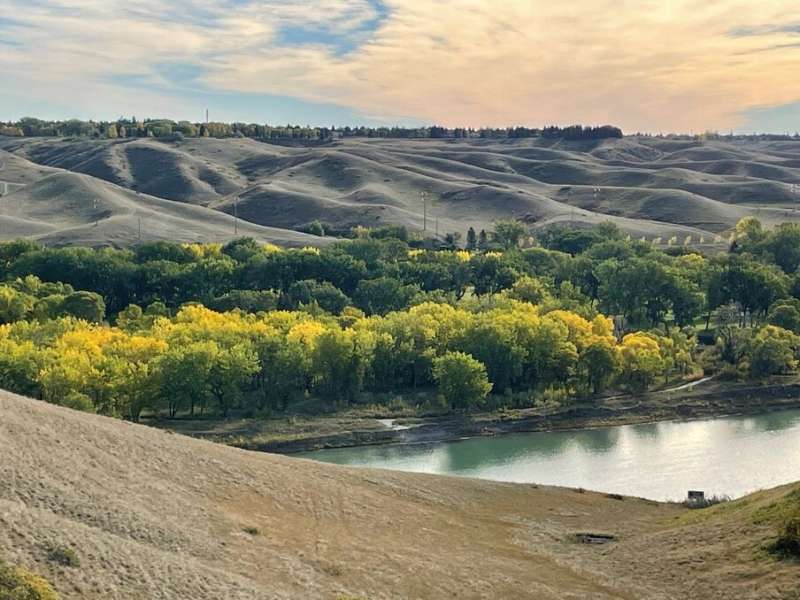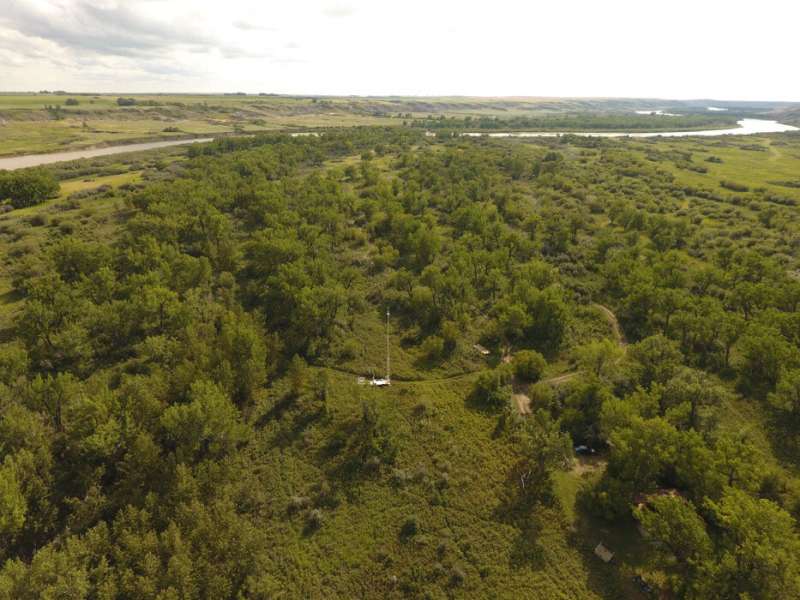What's missing from forest mortality projections? A look underground

You can't see it happening. But what goes on below ground in a forest is very important in determining its fate.
In a new study, scientists conclude that the sideways flow of water through soil can have an important impact on how riparian forests respond to climate change. Models used to predict the future plight of forests typically don't account for this factor—but they should, researchers say.
"There hasn't been a lot of attention on groundwater and how the movement of water from one location to another below ground can impact plants' survival prospects, making some locations drier, and others wetter," says lead author Xiaonan Tai, Ph.D., assistant professor of biological sciences at New Jersey Institute of Technology. "Groundwater is a hidden water source for ecosystems that people have neglected over the years: It is very hard to observe and quantify, just because we can't see it. The contribution of our new research is to begin characterizing lateral groundwater processes and quantifying how much of a role they can have in terms of influencing the future of forests."
The study was published in July in Environmental Research Letters, building on research themes that Tai explored as a Ph.D. student in geography at the University at Buffalo, where she completed her doctoral degree in 2018.
The new paper focuses on incorporating information about subsurface hydrology into computational models that predict the future fates of forests.
"Our research will fundamentally change the way the Earth systems modeling community will think about the impacts of future climate change droughts on forests," says Scott Mackay, Ph.D., UB professor and chair of geography and professor of environment and sustainability. "In essence, the various vegetation models out there today assume the world is flat. Our model changes the story by allowing for water to be moved laterally below the surface, while simultaneously modeling the physiological responses of trees on the landscape."

In addition to Tai and Mackay, authors of the new study include Martin D. Venturas, Ph.D., at the Universidad Politécnica de Madrid; Paul D. Brooks at the University of Utah; and Lawrence B. Flanagan, Ph.D., at the University of Lethbridge. The research was funded by the U.S. National Science Foundation.
The paper models potential futures for a riparian cottonwood forest in Alberta, Canada, focusing on a 20-year period at the end of the 21st century. Riparian forests are common ecosystems that are located next to a body of water like a stream or pond.
Conventional wisdom suggests that as carbon dioxide levels in forests increase, tiny pores on leaves—called stomata—will not need to open as wide to absorb the carbon dioxide that plants need for photosynthesis. This, in turn, will lead to a reduction in water loss, which occurs through stomata.
But the new study suggests that the amount of water saved for future use may not be as great as anticipated: "Once you introduce subsurface lateral water flow, there is still extra saved water, but that saved water won't all stay local," Tai says. "Some of it will move away, and once it's gone, plants won't be able to use it in future droughts."
In addition, models that fail to consider horizontal water flow may overestimate other mortality risks, Mackay says.
"Within the soil, water can move in all directions from areas of high water content to areas of low water content," he says. "This is pronounced in mountainous landscapes because water moves from high to low elevation, and in close proximity to water bodies, such as one finds in river floodplains.
"By moving the water around horizontally, locations that would otherwise be very dry when the rain stops are made wetter, while areas that are typically wet can afford to give up some water without harming the plants."
The big-picture message of the research? If scientists and policymakers want to understand how riparian forests will fare in a warming world, they'll need to think more about hydrology and the hard-to-see processes that occur beneath the forest floor.
More information: Xiaonan Tai et al, Lateral subsurface flow modulates forest mortality risk to future climate and elevated CO2, Environmental Research Letters (2021). DOI: 10.1088/1748-9326/ac1135
Journal information: Environmental Research Letters
Provided by University at Buffalo




















